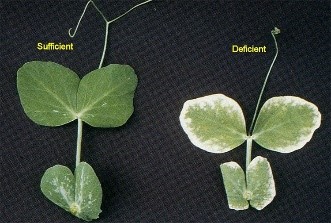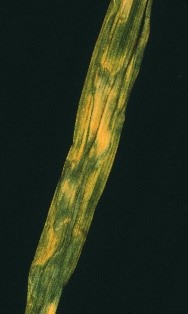
Zinc
Nutrient Benefits
Antagonism
High Zn levels can reduce the availability of:
- Iron
- Phosphorus
Stimulation
- Stimulation
- Nitrogen assimilation
Functions
- Formation of chlorophyll
- Uptake and use of water in plants
- Zinc influences the rate of seed and stalk maturation
- Involved in several enzyme systems, growth hormone auxins, and synthesis of nucleic acids
Deficiency Symptoms
- Stunted growth
- Reduced size of leaves, misshapen leaves
- Chlorosis, leading to necrosis and premature leaf fall
- Chlorotic leaves and dieback in citrus
- Rosetting and/or “little leaf” in fruit trees
- “Tram lining” in corn (light striping on both side of midrib)
- Bronze spotting on older leaves later giving a mottled appearance in legumes
- Reduced development and size of fruit
Factors Affecting Availability
- Soils evolved from parent material low in Zn
- High pH soils
- Heavily limed soils
- Soils with high Mg levels
- Soils high in organic matter
- Soils high in K
- Soils that have been levelled, exposing the sub soils
- Soils that have had high N input
- Cold, wet conditions (availability can be delayed at spring time)
Sensitive Crops
- Cereals, cotton, fruit, citrus trees, nuts, oil seed crops, pome fruit, rice, stone fruit, vegetables, pulses
TREATMENT OPTIONS
The following OMEX products can assist with addressing and correcting Zinc deficiency:
Visual Guide



